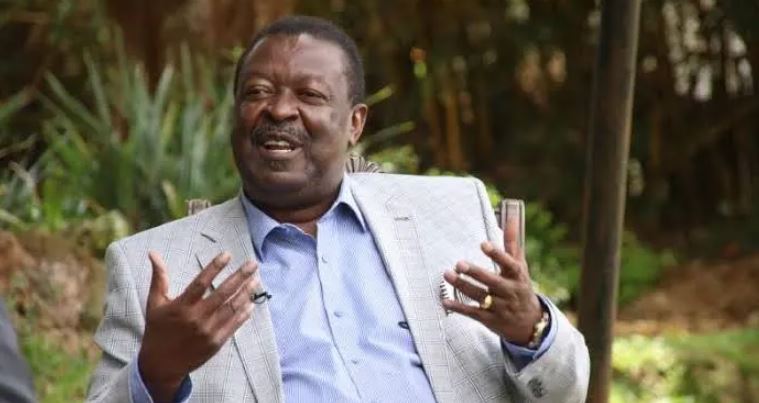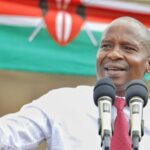 By Musalia Mudavadi
By Musalia Mudavadi
Many men are embarrassed to admit they are ill-suited to champion gender inclusiveness, hiding their reluctance in the excuse that it is the shoe wearer who knows where it pinches. However, years of gender activism have been instilled in men with defensive fear. Instead of opening up to speak freely to the realities of our women folk, they have adopted indifference.
Recently, I addressed a conference on the empowerment of women from Western. My topic was: “Enabling greater gender inclusiveness in governance institutions and processes”. By mobilizing their own resources to mount the first-ever Western Region Women Conference, the women crossed the first Rubicon on empowerment and commitment to organize themselves. I saw in this conference the building blocks for a viable women’s economic bloc. Why?
The beginning of a solution is identifying the problem. Kakamega and Bungoma, two of our largest counties, are among the top five contributors to national poverty. Kakamega competes with Mandera (4.69 percent) for the top spot, while Bungoma (3.98 percent) is fifth after Turkana (4.13 percent) and Nairobi (3.94 percent).
As of 2021, Bungoma County’s population was estimated at 1,670,570 people, Kenya’s fifth largest by county. 89 percent of its population is rural. Agriculture is dominant with over 92 percent of households engaged. However, the county poverty level is 35.7 percent.
Over 80 percent engage in farming
Vihiga County’s population of over 700,000 makes for Kenya’s third most densely populated at 983km². 66 percent of the economically active population is in agriculture. 43.2 percent of the people are poor. Agriculture dominates Kakamega’s population of 1,867,579 with 73 percent engaged. However, 49.2 percent of its people are poor. Agriculture is the backbone of one million Trans Nzoia County people.
Over 80 percent engage in farming while 58 percent of livelihoods depend on agriculture. In this apparent bread basket of the country, 43.6 percent of the people are poor, and 20 percent of households face food insecurity.
Busia County’s population of over one million depends on agriculture and trade. The dependency ratio is 100:107, implying that for every 100 people of working age, there were 107 people dependent upon them.
By now you know my drift: All counties’ poverty indexes are above the national average of 34.3 percent. Paradoxically, two complementary themes in western Kenya’s economic data are agriculture and poverty. Question: Why is agriculture as the economic mainstay, breeding poverty?
Wherever poverty prevails, you know for whom the bell tolls – women. Because the most painfully impacted are women, obviously poverty multiplier effect on gender inclusiveness fosters poor health, education, productivity, and economic well-being. The Kenya Human Development Report (2009) shows the county’s overall Gender Inequality Index (GII) was 0.451. The GII for the Western region was close to 0.457.
This translates to gender-based inequity and inequality in reproductive health and education empowerment, the labour market, and in leadership. Should it surprise us the region has only one single-constituency elected woman – Mary Emase of Teso South?
It’s fair to conclude that eradicating poverty will result in reduced gender disparities leading to improved gender equity. It calls for investments that will replace poverty with sustainable economic growth, and therefore social justice. There are other grim statistics on the status of women in Western.
Three illustrations will do: On teenage pregnancy rate, the vulnerability of the girl-child has grim statistics from the most current Kenya Demographic and Health Survey 2022. Bungoma, Busia, Trans Nzoia, and Kakamega are leading, above 14.9 percent nationally with over 18 percent in the girl-child risk of pregnancy.
Way forward
The way forward, let’s borrow from the Human Development Paradigm that incorporates equality, sustainability, productivity, empowerment, cooperation, and security. We must build up human capacities from early childhood by investing in better health, and education and then use their capabilities for growth.
Public institutions should provide services that advance the human rights of women and men equally but must consider women’s specific experiences and needs. As Kenyans, it is our sacred duty to ensure that all services and opportunities are open to all people; and that male and female stereotypes do not define who benefits.
The operative phrases must be the lack of discrimination against a particular sex and the perpetuation of gender stereotypes in involvement in the economy and leadership.
The second stage in uplifting the status of our women is to enact an equivalent of the US Workforce Innovation and Opportunity Act (WIOA). WIOA is designed to help job seekers access employment, education, training, and support services to succeed in the labour market and to match employers with the skilled workers they need to compete in the global economy.
We must do the same for our women in Kenya. At Kenya Kwanza, we have the Economic Recovery Agenda geared towards an economic turnaround and inclusive growth. The Agenda aims to increase investments in five sectors with the largest impact on the economy and household welfare.
At the top is Agriculture; followed by Micro, Small, and Medium Enterprise (MSME); Housing and Settlement; Healthcare; Digital Superhighway, and the Creative Industry.
The writer is Prime Cabinet Secretary Musalia Mudavadi








